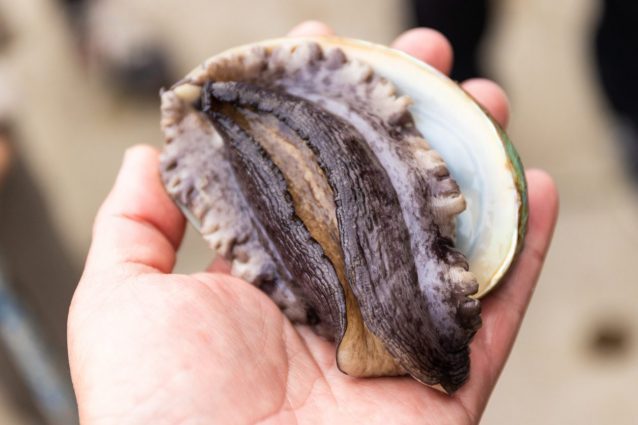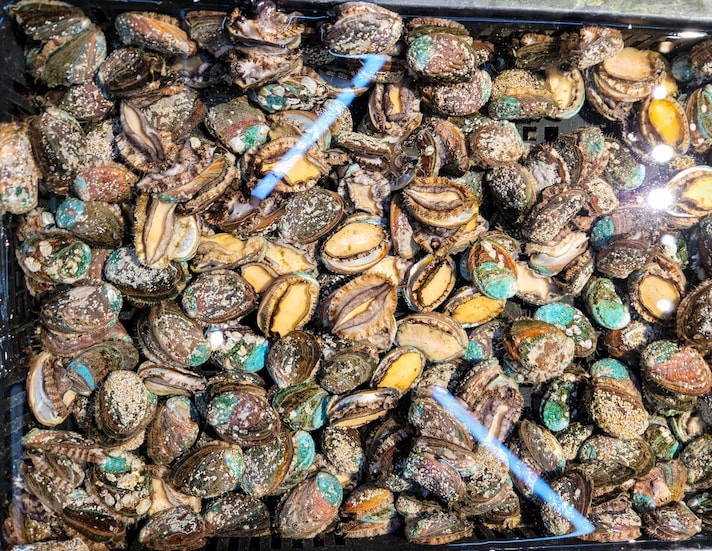What is Abalone, the Strange Mollusk That Costs Hundreds of Dollars
What is abalone, the $500-a-plate mollusk? It is also called Venus' ear because of its shape, and in recent years it has been among the most sought-after seafood in haute cuisine.
;Resize,width=742;)
It is called sea ear, as well as Venus' ear, and looking at it it is not difficult to understand why. The abalone is a particular mollusk that ‘inhabits' a fascinating mother-of-pearl shell, with a shape similar to an ear. Although it is not so well known to most, the abalone populates coasts that go from California to New Zealand, passing through some stretches of Africa, Japan and even Italy. In our country, specimens are mostly found in California, but it is in Asia that its consumption has been concentrated for centuries.

A peculiarity of it? In addition to its shape resembling an earlobe, it is certainly the selling price that catches the eye of interested or simply curious people. It probably won't cost as much as the percebes (particularly expensive especially due to the risks associated with their capture) but even the abalone can have its say from an economic point of view. This mollusk is not so easy to collect either: it lives attached to rocks at several meters of depth (from 5 to 15, approximately), and in addition in recent decades the high market demand has also put its survival at risk. Some species of abalone, in fact, are also at risk of extinction, which is why fishing has been strictly regulated.
How Much Does Abalone Cost?
Lately, even haute cuisine has rediscovered this product, promoting a greater widespread knowledge of abalone. But why is it so sought after and renowned? Having said that the price is particularly high due to their rarity and the difficulty of harvesting, in the kitchen they are a delicious ingredient as they are rich in proteins, calcium, magnesium, iron and omega 3, with a low fat content.

The size of these mollusks can vary from a few centimeters to half a meter for the largest specimens, and obviously the selling price varies depending on the weight of the animal. As a guide, however, a dish based on abalone can cost up to 500 dollars. A figure that also includes a not exactly immediate preparation time: abalone meat must be cooked for many hours due to its particularly hard consistency, until it reaches a more delicate and tender texture.
It is particularly widespread in Asian cuisine, in recent decades the ormea (another name by which this mollusc is known) is also being discovered in the Western world.
What Does Abalone Taste Like?
Abalone is usually characterized as possessing a robust flavor and a texture unlike other shellfish. Most people characterize its flavor as being somewhat sweet, slightly salty, having a nutty taste, and a subtle oceanic flavor that is not quite as potent or "fishy" as other seafood such as clams or oysters. The texture is firm yet tender, and when cooked correctly, possesses a nice, slightly chewy consistency, but not quite as rubbery as squid.
By way of comparison, abalone is most often likened to a more refined scallop but with a richer, more complex taste. It's said by some to have the texture of lobster without the cloying sweetness of lobster. It's also likened sometimes to a properly cooked, high-quality clam or even to the soft flesh of a sea urchin but with its own special oceanic tang.
Is Abalone Illegal in The U.S.?
Abalone is not illegal in the U.S. to gather or eat but is highly controlled because of overfishing and conservation. Wild abalone harvesting is prohibited or limited in states like California to save populations. Abalone recreational harvests and commercial fishing are tightly controlled with closed and open seasons and size limits. Some, such as the white abalone, are illegal to harvest and are endangered. Be certain to consult local laws prior to trying to harvest or buy abalone.
;Resize,width=767;)


;Resize,width=712;)
